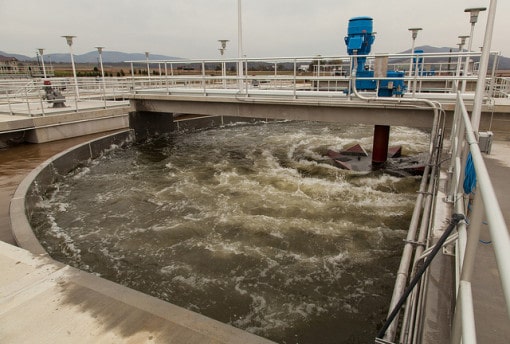This post is part of Westwater Hydrology’s efforts to help inform the public on local developments regarding per- and polyfluoroalkyl substances (PFAS). More about PFAS can be found at the links at the bottom of this post and on Westwater’s PFAS webpage which includes a downloadable PFAS Fact Sheet with an overview of the topic.
Colorado’s PFAS Standard Development
The Colorado Department of Public Health and Environment (CDPHE) is developing PFAS “Narrative Standards” (Colorado Standards) to set limits for five PFAS compounds (PFOA, PFOS, PFNA, PFHxS, and PFBS) in surface- and groundwater. As part of the development of these standards, three PFAS Work Group meetings will be held by the CDPHE Water Quality Control Division (WQCD). The first was held on September 17, 2019 and the draft Colorado Standard was released on November 12. This post summarizes the status of the Colorado Standards development as of the second PFAS Narrative Policy Work Group Meeting held on Tuesday Nov. 19, 2019. The third meeting will be held on February 11, 2020 and a draft standard provided to the WQCD on March 2 for finalization on May 11, 2020. The following bullet points summarize the Draft Narrative Standards; further detail is provided below for those just getting up to speed on the PFAS standards.
According to the CDPHE, the Colorado Standard will:
- Employ the use of “Narrative Standards” for surface- and groundwater under WQCD Regulations 31 and 41, respectively; this will expedite the Standard development relative to a potentially years-long process of adding PFAS numeric standards to the Regulations,
- Group PFAS compounds according to health effects and translated toxicity levels:
- Developmental toxins: Sets limits for PFOS + PFOA + PFNA + four identified parent compounds = 70 parts-per-trillion (ppt),
- Endocrine toxins: Sets limit for PFHxS = 700 ppt (no parent compounds identified),
- Renal toxins: Sets limit for PFBS = 400,000 ppt (no parent compounds identified),
- Set minimum analytical requirements (detection level, specific PFAS compound list, lab certification) until draft EPA PFAS Method 8327 is validated and finalized,
- Make recommendations regarding sampling and analysis procedures,
- Apply to effluent discharge and other discharge permits,
- Be used in cleanup actions and for protection of groundwater and drinking water sources.
Now for the Details…
Using the “Narrative Standard” Approach – CDPHE is taking an expedited approach to be responsive to public concern about this class of compounds. The use of “Narrative Standards” is an administrative tool allowing CDPHE to set standards based on the narrative portions of the regulations requiring surface- and groundwater to be “free from” pollutants not specifically listed in the tables found in the respective surface- and groundwater regulations. The standard will not apply to drinking water but will provide for monitoring and source investigation considering the presence of PFAS constituents in drinking water sources.
Grouping by Health Effects and Toxicity, Inclusion of Parent Compounds – CDPHE proposes grouping and setting limits for PFAS compounds based on their developmental, endocrine, and renal  toxicity levels. Additionally, CDPHE translated the narrative standards using results from federally-derived consensus findings on the toxicity of the compounds PFOA, PFOS, PFNA, PFHxS, and PFBS to develop the Colorado Standard. CDPHE is also taking the novel approach of including four polyfluorinated compounds that are “oxidizable precursors” or “parent compounds” to the five compounds. While there may be many more parent compounds, CDPHE is only considering those that are included on the analytical list for EPA’s proposed draft laboratory method, EPA SW-846 Method 8327* (Method 8327).
toxicity levels. Additionally, CDPHE translated the narrative standards using results from federally-derived consensus findings on the toxicity of the compounds PFOA, PFOS, PFNA, PFHxS, and PFBS to develop the Colorado Standard. CDPHE is also taking the novel approach of including four polyfluorinated compounds that are “oxidizable precursors” or “parent compounds” to the five compounds. While there may be many more parent compounds, CDPHE is only considering those that are included on the analytical list for EPA’s proposed draft laboratory method, EPA SW-846 Method 8327* (Method 8327).
- Developmental Toxins: (PFOA, PFOS, and PFNA): Developmental toxicity is related primarily to effects to a developing fetus or a breast-fed child. PFAS compounds shown to exhibit developmental toxicity include PFOS and
 PFOA; PFNA has been added to this pair based on the ATSDR’s 2018 report showing a similar minimal risk levels (MRLs) for developmental toxicity as PFOS and PFOA. CDPHE is following EPA’s lead setting the Standard at 70 ppt level for the sum of these three compounds. Additionally, parent compounds reported in the Method 8327 list are NEtFOSAA, NMeFOSAA, PFOSA/FOSA which can be oxidized in the environment to PFOS, and the parent compound 8:2 FTS which can be oxidized to PFOA. The Standard conservatively assumes all of the parent compound mass will be oxidized and uses a formula based on concentration and molecular weights.
PFOA; PFNA has been added to this pair based on the ATSDR’s 2018 report showing a similar minimal risk levels (MRLs) for developmental toxicity as PFOS and PFOA. CDPHE is following EPA’s lead setting the Standard at 70 ppt level for the sum of these three compounds. Additionally, parent compounds reported in the Method 8327 list are NEtFOSAA, NMeFOSAA, PFOSA/FOSA which can be oxidized in the environment to PFOS, and the parent compound 8:2 FTS which can be oxidized to PFOA. The Standard conservatively assumes all of the parent compound mass will be oxidized and uses a formula based on concentration and molecular weights. - Endocrine Toxins (PFHxS): Endocrine toxicity is related to interference with hormones necessary for endocrine functions of a number of internal organs. The compound PFHxS has been shown to exhibit endocrine toxicity and has a MRL ten times that of PFOS and PFOA; thus the PFHxS Standard is set at 700 ppt. No parent compounds are currently identified for PFHxS.
- Renal Toxins (PFBS): Renal toxicity is related to kidney damage. The compound PFBS has been shown to exhibit renal toxicity. The 400,000 ppt level was based on a Provisional Peer-Reviewed Toxicity Value primarily derived for use in EPA’s Superfund Program from a review of the relevant scientific literature using EPA methods, data sources, and guidance. The value of 400,000 ppt was selected for PFBS based on the EPA Regional Screening Level in tap water for PFBS. No parent compounds are currently identified for PFBS.
Minimum Analytical Requirements – Currently there are limited commercially-available analytical methods for PFAS in surface- and groundwater and wastewater. CDPHE appears to rely on the EPA’s draft analytical Method 8327*, however this method has not been finalized yet. The most common PFAS analytical methods for non-drinking water matrices are proprietary modified versions of the drinking water analytical Method 537, referred to as “modified method 537.” The EPA is in the process of developing and validating analytical 
methods for PFAS in surface- and groundwater, wastewater, soil, etc. and has proposed draft Method 8327*. Until the EPA develops and validates a method for non-drinking water matrices, the Colorado Standard will allow analysis by modified 537 methods and ASTM method D7979 providing the methods adhere to Department of Defense quality standards (DoD, QSM 5.1 or later, table B-15). The Colorado Standard also requires a list of 25 PFAS compounds to be reported and quantified to minimum reporting levels of 8 ppt for most compounds and 20 ppt for several others. The Colorado Standard’s required reporting levels of 8 ppt are higher than regulatory or guidance levels set or proposed by some states for select PFAS compounds.
Sampling and Analysis Considerations – The Colorado Standard recognizes that care should be taken during sample collection and analysis to avoid using materials that contain PFAS compounds, such as Teflon™ tubing or sampling tools, containers, or other materials made of polytetrafluoroethylene (PTFE). Quality control sample collection is also mentioned, however details are not available yet.
Effluent Discharge Permits – The Colorado Standard will apply to some industrial dischargers, publicly-operated treatment works (POTWs)  with industrial pre-treatment programs, other POTWs with significant sources of PFAS, and some dewatering permits. Industrial sources, wastewater treatment plants and some dewatering activities will require initial monitoring. Continued monitoring and source investigation may be required if PFAS is present, and based on proximity to drinking water sources. Effluent limits will apply to only to PFOA, PFOS, PFNA, PFHxS, and PFBS. The standard also makes provision for applicability to Colorado’s list of impaired waters.
with industrial pre-treatment programs, other POTWs with significant sources of PFAS, and some dewatering permits. Industrial sources, wastewater treatment plants and some dewatering activities will require initial monitoring. Continued monitoring and source investigation may be required if PFAS is present, and based on proximity to drinking water sources. Effluent limits will apply to only to PFOA, PFOS, PFNA, PFHxS, and PFBS. The standard also makes provision for applicability to Colorado’s list of impaired waters.
Use in Groundwater Cleanup Actions – The draft Colorado Standard currently has a placeholder for this topic. At the meeting CDPHE staff stated that PFAS has been detected at about 16 RCRA hazardous waste sites in Colorado and that at most of these sites PFAS has not migrated offsite. Parties sampling their groundwater for PFAS will not be responsible for cleanup unless they are the ones who released the PFAS materials to the environment.
*Note Regarding Analytical Method 8327: In its current form draft Method 8327 has reporting levels that are about 10 times higher than  many commercially-available modified 537 methods. The DoD’s Environmental Data Quality Workgroup considers Method 8327 only useful as a screening-level analytical method “that should not be used for the collection of definitive data” needed for project decision making. Additionally, the Colorado Standard requires reporting limits at 8 ppt for PFOA, PFOS, PFNA, PFHxS, and PFBS, and 20 ppt for the parent compounds included in the standard, NEtFOSAA, NMeFOSAA, PFOSA/FOSA and 8:2 FTS. Method 8327 has “suggested lower limits of quantitation and calibration ranges” of 10 ppt for PFOA, PFOS, PFNA, and PFBS and 40 ppt for PFHxS. Method 8327 quantitation limits are thus higher than the required reporting levels set forth in the Colorado Standard. The Colorado Standard also lists the PFAS compound “Gen-X,” developed as a “safer” replacement compound for PFOA, however Gen-X is not included in the Method 8327 compound list.
many commercially-available modified 537 methods. The DoD’s Environmental Data Quality Workgroup considers Method 8327 only useful as a screening-level analytical method “that should not be used for the collection of definitive data” needed for project decision making. Additionally, the Colorado Standard requires reporting limits at 8 ppt for PFOA, PFOS, PFNA, PFHxS, and PFBS, and 20 ppt for the parent compounds included in the standard, NEtFOSAA, NMeFOSAA, PFOSA/FOSA and 8:2 FTS. Method 8327 has “suggested lower limits of quantitation and calibration ranges” of 10 ppt for PFOA, PFOS, PFNA, and PFBS and 40 ppt for PFHxS. Method 8327 quantitation limits are thus higher than the required reporting levels set forth in the Colorado Standard. The Colorado Standard also lists the PFAS compound “Gen-X,” developed as a “safer” replacement compound for PFOA, however Gen-X is not included in the Method 8327 compound list.
More information can be found at:
CDPHE PFAS Narrative Policy Work Group
CDPHE Perfluorinated Compounds Resources Webpage
December 9, 2019

 PFOA; PFNA has been added to this pair based on the ATSDR’s 2018 report showing a similar minimal risk levels (MRLs) for developmental toxicity as PFOS and PFOA. CDPHE is following EPA’s lead setting the Standard at 70 ppt level for the sum of these three compounds. Additionally, parent compounds reported in the Method 8327 list are NEtFOSAA, NMeFOSAA, PFOSA/FOSA which can be oxidized in the environment to PFOS, and the parent compound 8:2 FTS which can be oxidized to PFOA. The Standard conservatively assumes all of the parent compound mass will be oxidized and uses a formula based on concentration and molecular weights.
PFOA; PFNA has been added to this pair based on the ATSDR’s 2018 report showing a similar minimal risk levels (MRLs) for developmental toxicity as PFOS and PFOA. CDPHE is following EPA’s lead setting the Standard at 70 ppt level for the sum of these three compounds. Additionally, parent compounds reported in the Method 8327 list are NEtFOSAA, NMeFOSAA, PFOSA/FOSA which can be oxidized in the environment to PFOS, and the parent compound 8:2 FTS which can be oxidized to PFOA. The Standard conservatively assumes all of the parent compound mass will be oxidized and uses a formula based on concentration and molecular weights.